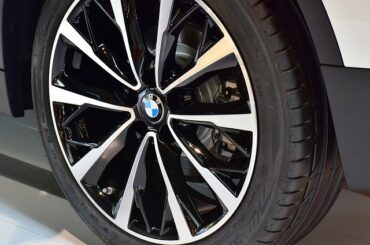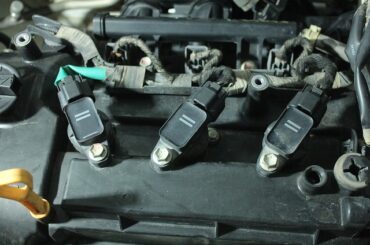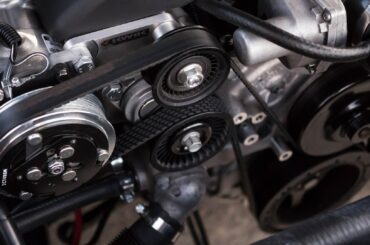Contents
Is It Safe to Drive with a Bent Radiator? – Introduction

The radiator, often considered the heart of a vehicle’s cooling system, is a critical component that plays a central role in maintaining the engine’s operating temperature. It functions as a heat exchanger, efficiently cooling the engine by dissipating excess heat generated during operation. However, what happens when this vital component becomes compromised, such as when it’s bent or damaged? Is it safe to continue driving with a bent radiator?
In this comprehensive article, we will delve into the significance of the radiator, the potential risks associated with driving with a damaged radiator, and the precautions you should take to ensure both your safety and your vehicle’s well-being.
What Happens If You Drive With A Broken Radiator: https://m.youtube.com/watch?v=po4GJMnTTOU&pp=ygUpSXMgSXQgU2FmZSB0byBEcml2ZSB3aXRoIGEgQmVudCBSYWRpYXRvcj8%3D
Understanding the Role of the Radiator:
To fully comprehend the implications of a bent or damaged radiator, it’s essential to recognize its pivotal role in a vehicle’s functioning. The radiator acts as a crucial heat exchanger within the engine’s cooling system. Here’s how it works:
– Hot coolant from the engine enters the radiator.
– As the hot coolant circulates through the radiator’s tubes, it is exposed to the cooling effect of air passing through the radiator’s fins.
– This exposure to cool air reduces the temperature of the coolant.
– The now-cooled coolant is circulated back through the engine, regulating the engine’s temperature and preventing overheating.
Risks of Driving with a Bent Radiator:
1. Reduced Cooling Efficiency: A bent or damaged radiator typically exhibits signs of compromised cooling efficiency. When the radiator’s fins are bent or blocked, the heat exchange process is hindered, leading to diminished cooling capacity. This reduced efficiency can result in the engine running at elevated temperatures, which, in turn, can lead to the risk of overheating.
2. Coolant Leaks: A bent radiator is more susceptible to developing leaks, which can lead to coolant loss. Coolant is essential for regulating the engine’s temperature. A loss of coolant due to leaks can result in overheating and potential engine damage. Additionally, coolant leaks can harm other engine components, leading to more extensive and expensive repairs.
3. Engine Overheating: A compromised radiator significantly increases the risk of engine overheating. Overheating is a critical issue that can result in severe engine damage, including warped cylinder heads, blown gaskets, or even complete engine failure. Repairing these issues can entail substantial costs, making it imperative to address radiator damage promptly.
4. Strain on Other Components: When the radiator is not functioning optimally, it can impose additional stress on other cooling system components, such as the water pump and thermostat. This added strain can lead to a cascading effect of damage and failures throughout the cooling system, exacerbating repair costs and downtime.
Precautions When Driving with a Bent Radiator:
If circumstances require that you continue driving with a bent radiator, it is imperative to take specific precautions to minimize risks:
1. Monitor Engine Temperature: Regularly monitor the engine temperature gauge. If it starts to rise excessively, this is a clear indication that the engine is struggling due to reduced cooling efficiency. In such cases, it is crucial to pull over and allow the engine to cool down before resuming your journey.
2. Limit Driving: Whenever possible, restrict your driving to essential trips only. Avoid embarking on long journeys or driving in strenuous conditions that could exacerbate the strain on your compromised radiator.
3. Address the Issue Promptly: A bent or damaged radiator is not a concern that can be swept under the rug. It is essential to address the problem as soon as possible to prevent further damage and costly repairs. Seek the expertise of a qualified mechanic or a radiator specialist to conduct a professional assessment and initiate necessary repairs or replacements.
The Bottom Line:
While it may be tempting to postpone addressing a bent or damaged radiator to mitigate immediate repair costs, the associated risks are undeniably significant. Reduced cooling efficiency, coolant leaks, engine overheating, and damage to other engine components are all potential consequences of driving with a compromised radiator. To ensure both your safety and the longevity of your vehicle, it is critical to prioritize the health of your vehicle’s cooling system and promptly address any radiator damage.
In the world of automotive care, prevention is unquestionably more cost-effective than dealing with the repercussions of extensive engine damage or breakdowns. Regular vehicle maintenance, which includes addressing issues like a bent or damaged radiator, is non-negotiable for safeguarding a safe and trouble-free driving experience.
The radiator in a vehicle is not just another component; it is an indispensable part of the engine’s cooling system, playing a central role in regulating the engine’s operating temperature. A bent or damaged radiator can introduce a host of problems that can compromise both the safety of your vehicle and your wallet.
The risks associated with driving a vehicle with a damaged radiator are not to be underestimated. These include reduced cooling efficiency, coolant leaks, engine overheating, and added stress on other crucial cooling system components. Postponing radiator repairs or replacements in the hope of saving on immediate costs can lead to severe consequences, including extensive engine damage and expensive repairs.

Conclusion
While it may sometimes be necessary to drive temporarily with a bent radiator, taking precautions to minimize risks is paramount. Monitoring engine temperature, limiting non-essential driving, and addressing the issue as soon as possible are vital steps to safeguard both your safety and your vehicle’s health.
Ultimately, prioritizing regular vehicle maintenance, including prompt attention to radiator issues, is the best course of action. Prevention is far more cost-effective than dealing with the aftermath of extensive engine damage or breakdowns. Your vehicle’s cooling system, including the radiator, plays a vital role in ensuring a safe and trouble-free driving experience.
More Links:
The Crankcase Oil Filter: Guardian of Your Engine’s Health: https://motorpet.com/the-crankcase-oil-filter/
How to Clean a Serpentine Belt: Steps, Precautions, and Benefits: https://motorpet.com/how-to-clean-a-serpentine-belt/






